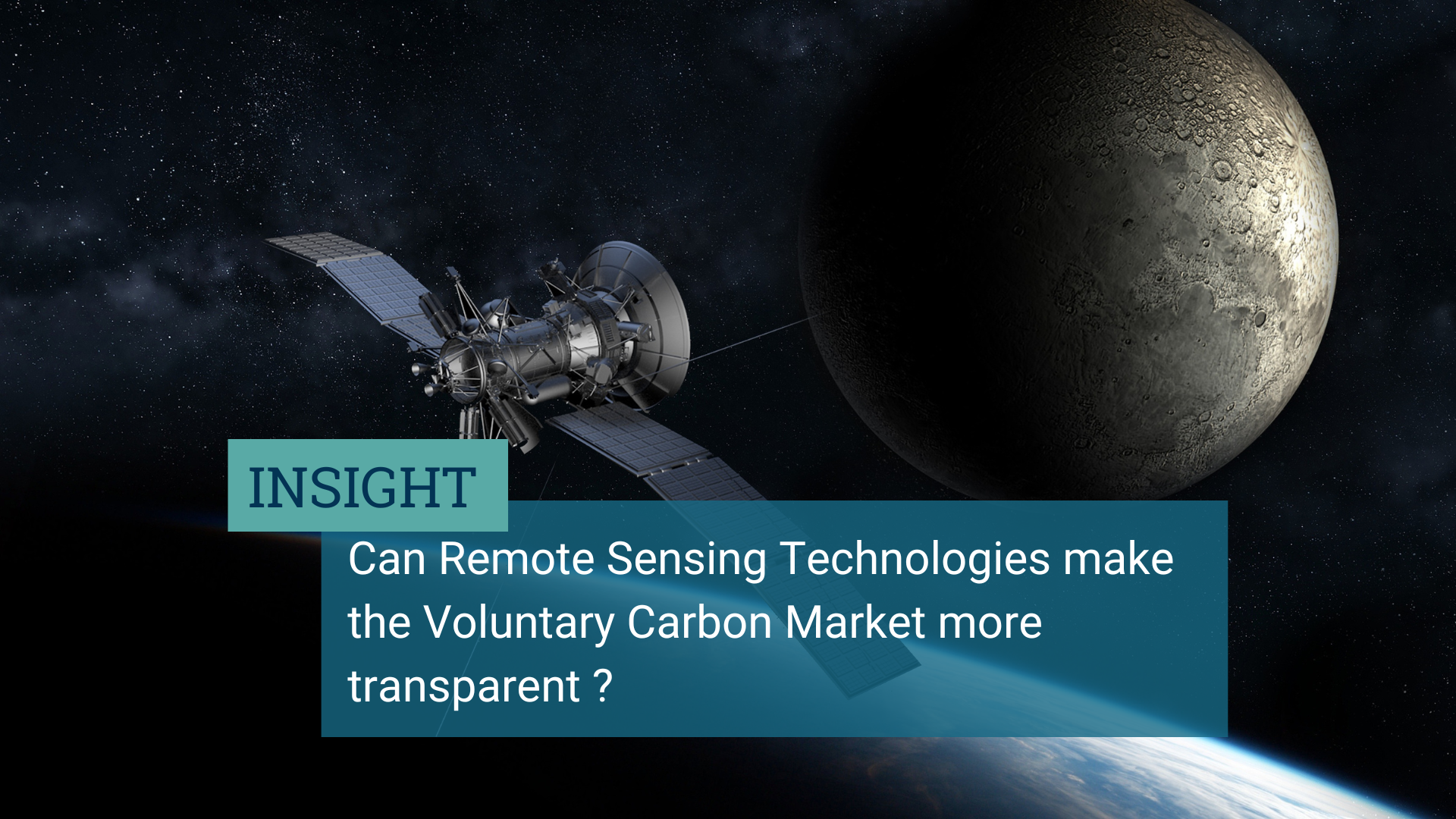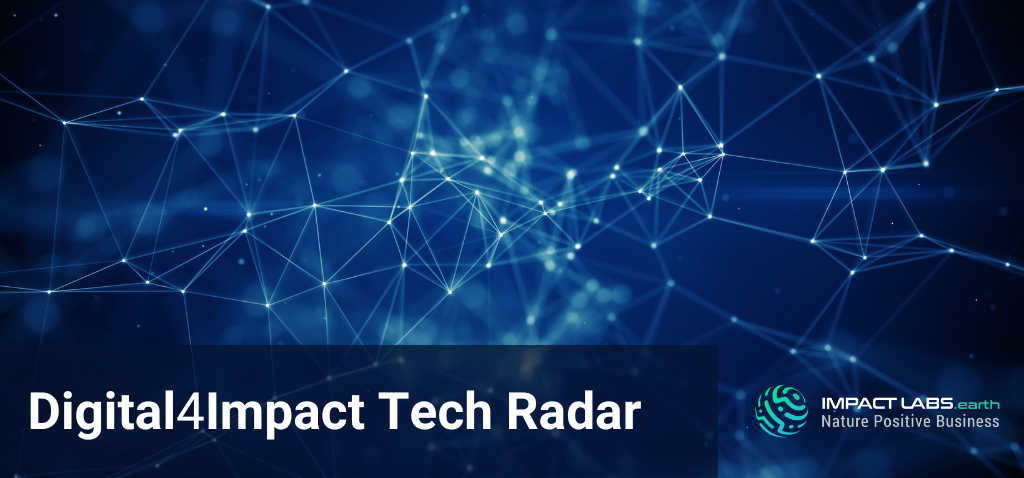
Nature-based Solutions are under high scrutiny as they have become the most sought-after approach to preserve and increase the potential of natural carbon sinks (land, forest, and oceans) while allowing public bodies and private companies to fulfil their net-zero commitments. Last year’s REDD+ scandal, compelled by the Guardian-led investigation, should not divert the attention from the Voluntary Carbon Market, but on the contrary, accelerate its transition to a more mature, transparent, and data-driven trading place. Remote-Sensing (RS) tech is the most promising tool to achieve this transformation, leveraging geospatial big data and AI to model biomass in near real-time.

Marine Utgé-Royo
Head of Innovation
The Voluntary Carbon Market is confronted by double challenges of rising demand and fierce criticism
In 2022, the Voluntary Carbon Market (VCM) was estimated at just under $2Bn (Ecosystem Marketplace), steady from 2021. It is worth mentioning that projects to reduce deforestation are dominant in this market, since 65% of carbon credits come from the REDD+ system. After the global financial crisis, the VCM has been growing steadily, but took a severe hit in early 2023 due to the joint investigation of the Guardian, Die Zeit, and Source Material, stating that more than 90% of Verra-certified rainforest carbon offsets were “useless”.
Beyond the public outcry, this scandal triggers investigations on the different credit types hidden behind VCM, and to highlight the necessity to switch to high-integrity carbon projects. This article will focus on Nature-based Solutions (NbS) which encompass the actions to protect, sustainably manage, and restore ecosystems and their benefits for humans and nature.
Indeed, terrestrial ecosystem protection and restoration is instrumental to undergo the transition towards a low-carbon and climate-resilient global economy. Land use and forest accounts for 46% of CO2 stored in 2022, in addition to other essential environmental services such as hosting animal and plant biodiversity, providing food, and enabling economic livelihoods to local communities. However, the inherent complexity of natural ecosystems and their huge scale require specific solutions to enable direct monitoring.
Remote Sensing Technologies for Nature Observation are booming but are far from reaching their full potential
The combination of spaceborne imagery, AI/Machine Learning, and environmental science has crystallized over the past decade to offer the most promising solution to monitor natural resources at scale and at an unprecedented level of accuracy. Remote Sensing solutions leverage the ever-dropping prices of spaceborne data and computing power to serve a wide range of industries: from agrifood, timber, to the voluntary carbon market, and urban planning, all of which heavily rely on land, forest, and crops.
Remote Sensing Solutions allow to detect and track change over time in land, vegetation, and crops by capturing an evergrowing list of bioclimatic parameters such as soil moisture. The derived applications mainly include Land Cover Classification, Land Use Change, Forest Management (tree count, tree growth monitoring, …), Deforestation Tracking, Biomass Estimation, Nature Conservation, Responsible Sourcing, and Natural Disaster Prevention and Response.
Two main types of user uptakes have shaped the market over the past 10 years:
Natural resources industrial managers were early adopters of remote sensing technologies, namely large farmers focusing on UAV (unmanned aerial vehicles)-captured data, followed by timber producers seduced by vegetation-specialised multispectral open data (e.g. ESA Sentinel-2 satellites, launched in 2015/16). A new wave of eager users has emerged over the past few years, driven by the VCM expansion: the Nature-based Solutions providers. From project developers to credit certification bodies and carbon offset end clients, the whole NBS value chain is racing to craft a scalable, reliable biomass estimation model compatible with Market Standards, i.e. Monitoring, Reporting, and Verification (MRV) Protocols.
Data-driven Nature-based Solutions are the most promising response to bring transparency to the Voluntary Carbon Market
RS solutions offer direct access to the field through unfalsifiable raw imagery as the first element of the carbon project value chain, with the end goal of creating next-gen Monitoring, Reporting and Verification (MRV) systems to overcome the current flawed ones.
Each category of player is testing or incorporating tech capabilities to absorb this evolution:
- Large Satellite operators are integrating downstream applications skills (eg. Planet has acquired the RS company Salo Science in 2023) ;
- Carbon credits Certification Bodies are willing to integrate Earth Observation-based methodologies within their protocols (eg. in 2023, Verra initiated a RS Pilot with Mantle Labs for Rice Projects and Gold Standard launched a consultation with SIG to assess the application of EO techniques to reduce monitoring costs)
- Project Developers are slowly adopting RS capabilities to increase their operations efficiency and transparency (eg. PUR implemented a pilot project with the German forest precision RS company Skylab to test vegetation modelling and monitoring)
- Large companies buying credits, often produced within their agro supply-chain, are willing to get a direct verification method of their assets’ permanence (eg. Nestlé announced their partnership with Airbus to monitor its Global Reforestation Program with the Pléiades Neo fleet in 2023)
Additionally to our Remote Sensing Tech Radar published earlier this month, here are further illustrations of Remote Sensing companies taking the game to the next level:
- Kanop’s platform enables clients to recalibrate AI models with their own field measurements (in-situ data) in order to improve accuracy, directly uploading it through the Web App or the API (biomass, tree height, etc.)
- Terra Pulse has created a workflow combining its nearly 40 years Tree Cover data with spaceborne lidar to map forest height-age relationships across entire biomes in North American boreal forest, unravelling unprecedented ecological insights.
- Land Life is a tech-driven reforestation company that has developed an analysis engine automating reforestation suitability studies by leveraging geospatial big data.
- Orbify has crafted a highly customizable platform with pre-registered AI layers, base maps, and aggregation/reporting/data viz features, making RS accessible to a great range of industries and stakeholders even without tech background.
The transparency promise, core to Remote Sensing Tech, extends beyond VC, serving the increasingly stringent regulation around Responsible Sourcing and Reporting, such as the European Regulation on Deforestation-free Supply Chains (EUDR).
Remote Sensing raises high hopes for Biodiversity and ultimately, for the monitoring of all Planetary Boundaries at scale. All the companies willing to address these challenges must therefore incorporate this direct access to the ground within their supply chain monitoring solutions. However, we should bear in mind that just like any tech, RS is merely a tool, thus will never substitute field access and environmental science. AI models’ accuracy still depends on ground truth data for calibration and verification; though they reveal trends and threats, the models have no capacity to act on it.
Check out our Digital4Impact Tech Radar, to get more insights into companies offering Remote Sensing-based solutions for the environment, and much more
Impact Labs CSRD Offer
We are happy to introduce our tailored CSRD service offer, designed to simplify compliance with the new regulations and drive impactful sustainability strategies. This way, teams can focus on reducing their footprint and developing effective nature strategies.
We streamline the CSRD reporting process with relevant tech and tools to make it as smooth and efficient as possible. Our service is designed to guide you through every step of this transformative journey.
Checklist on 10 key aspects to consider when selecting a CSRD Tool
Selecting the right technology for implementing the Corporate Sustainability Reporting Directive (CSRD) involves several key considerations to ensure compliance, efficiency, and effectiveness.
#REBOOT Business 12 – Une Economie Plus Juste
EPISODE SUMMARYAu fil des podcasts Reboot se dessine une ligne convergente vers l’urgence impérieuse de changer le système dans sa globalité. C’est...





